Top 11 Floating Aquarium Plants: Natural Beauty and Shade for Your Tank
If you’re looking to elevate your aquarium with a touch of wild, effortless beauty, floating plants are a game-changer. These free-floating wonders not only add lush greenery to the surface of your tank but also create shade, reduce algae, and offer safe hideouts for fish and fry. From the elegant Amazon Frogbit to the vibrant Red Root Floater, floating plants are easy to grow and bring a natural balance to your aquascape. Whether you’re a seasoned aquarist or just getting started, this guide will introduce you to the most popular floating plants that can transform your aquarium—both aesthetically and ecologically.
- Duckweed (Lemna minor)
- Giant Duckweed (Spirodela polyrhiza)
- Amazon Frogbit (Limnobium laevigatum)
- Water Lettuce (Pistia stratiotes)
- Water Spangles (Salvinia Minima)
- Red Root Floater (Phyllanthus fluitans)
- Hornwort (Ceratophyllum demersum)
- Mosquito Fern (Azolla Filiculoides)
- Dwarf Pennywort (Hydrocotyle tripartita)
- Water Hyacinth (Eichhornia crassipes)
- Floating Crystalwort (Riccia fluitans)
Duckweed (Lemna minor)

- Difficulty: Easy
- Growth Rate: Very Fast
- Lighting: Low to Medium
- Temperature: 68–86°F (20–30°C)
- pH: 6.0–8.0
- Ideal for: Small/large aquariums, fry, nutrient control
Duckweed, scientifically known as Lemna minor, is a tiny, free-floating aquatic plant commonly found in ponds, lakes, and aquariums. Its small, oval-shaped leaves, often less than 5mm in diameter, form dense clusters that create a vibrant green carpet on the water’s surface. This plant is highly valued in aquarium settings for its ability to absorb excess nitrates and phosphates, helping to maintain water quality and reduce algae growth. Additionally, duckweed provides shade and shelter for fish and invertebrates, creating a natural habitat within the tank.

The rapid growth rate of duckweed is both its strength and challenge. Under optimal conditions—moderate light, warm water (15-30°C), and nutrient-rich environments—it can double its biomass in just a few days, making it an excellent choice for nutrient control. However, this prolific growth requires regular maintenance to prevent it from covering the entire water surface, which could block light and reduce oxygen levels for submerged plants and fish. Aquarists often thin it out by scooping excess plants from the surface, ensuring a balanced ecosystem.
Duckweed is remarkably hardy and adaptable, thriving in a wide range of water conditions, including low light and varying pH levels (5.0-9.0). It reproduces asexually by budding, producing daughter fronds that detach to form new plants. While this makes propagation effortless, it also means careful monitoring is essential to avoid overgrowth. For hobbyists seeking a low-maintenance plant with ecological benefits, duckweed is an excellent choice, provided its growth is kept in check.
Giant Duckweed (Spirodela polyrhiza)
- Difficulty: Easy
- Growth Rate: Moderate
- Lighting: Low to Medium
- Temperature: 68–86°F (20–30°C)
- pH: 6.0–8.0
- Ideal for: Small/large aquariums, fry, uniform cover
Giant Duckweed (Spirodela polyrhiza) is a larger, more manageable relative of common duckweed, with flat, oval fronds measuring 5-10 mm in diameter. This free-floating plant forms a uniform, green cover on the water’s surface, offering an attractive, polished look for aquariums. Its slower growth rate compared to Lemna minor makes it easier to control, requiring less frequent thinning while still providing shade and reducing nitrates. Giant Duckweed’s balanced growth and low-maintenance nature make it an ideal choice for aquarists seeking a practical yet visually appealing floating plant.
This plant thrives in a wide range of conditions, including low to moderate lighting and water temperatures between 15-30°C, with a pH tolerance of 5.5-8.0. Its ability to absorb nutrients directly through its fronds and small roots helps maintain water quality by competing with algae for resources. Giant Duckweed is particularly well-suited for both small and large aquariums, as its larger fronds create a cohesive surface cover without the overwhelming spread of smaller duckweed species.
Propagation occurs asexually, with new fronds budding from the parent plant, making it easy to expand or share with other tanks. Unlike its smaller cousin, Giant Duckweed’s growth is more predictable, allowing aquarists to maintain a tidy tank with minimal effort. It is also hardy enough to tolerate gentle water movement, though it prefers calmer conditions for optimal growth. For hobbyists looking to enhance their tank’s aesthetic while improving water quality, Giant Duckweed offers a perfect balance of beauty, functionality, and ease of care.
Amazon Frogbit (Limnobium laevigatum)
- Difficulty: Easy
- Growth Rate: Moderate
- Lighting: Medium to High
- Temperature: 64–82°F (18–28°C)
- pH: 6.0–7.5
- Ideal for: Small/large aquariums, fry, decorative cover
Amazon Frogbit, or Limnobium laevigatum, is a popular floating aquatic plant known for its round, glossy leaves that resemble miniature lily pads, typically 2-5 cm in diameter. Native to Central and South America, this plant adds a striking aesthetic to aquariums while offering practical benefits. Its long, trailing roots, which can extend up to 30 cm, provide excellent hiding spots for fry and small fish, enhancing the tank’s safety and visual appeal.
This plant thrives in moderate lighting and prefers water temperatures between 18-26°C with a pH range of 6.0-7.5. Amazon Frogbit is relatively easy to care for, making it suitable for both novice and experienced aquarists. It absorbs nutrients like nitrates and ammonia directly from the water through its roots, acting as a natural filter to improve water clarity and quality. However, it prefers calm water surfaces, as strong currents can damage its delicate leaves and roots.

Propagation of Amazon Frogbit is straightforward, as it produces runners that develop new plantlets, similar to strawberry plants. These plantlets can be separated to control the plant’s spread or to propagate it in other tanks. While it grows more slowly than duckweed, it still requires occasional thinning to prevent overcrowding. Its combination of aesthetic charm, ease of care, and ecological benefits makes Amazon Frogbit a favorite for aquarists aiming to create a balanced and visually appealing aquarium.
Amazon Frogbit can sometimes suffer from nutrient deficiencies, which may cause yellowing leaves. Regular supplementation with liquid fertilizers or a nutrient-rich substrate can address this issue. Its versatility allows it to be used in both small and large tanks, though it performs best in setups with moderate to high lighting and stable water conditions. This plant’s lush appearance and functional roots make it an ideal addition to any aquatic environment.
Water Lettuce (Pistia stratiotes)
- Difficulty: Moderate
- Growth Rate: Fast
- Lighting: High
- Temperature: 70–85°F (21–29°C)
- pH: 6.5–7.5
- Ideal for: Large aquariums, nutrient absorption, outdoor ponds
Water Lettuce, or Pistia stratiotes, is a distinctive floating aquatic plant with soft, velvety leaves that spiral outward in a rosette pattern, resembling a head of lettuce. Native to tropical and subtropical regions, this plant is prized for its unique texture and lush, light-green appearance, which adds a dramatic flair to aquariums. Its long, feathery roots, which can extend up to 50 cm, serve as a natural filter by absorbing excess nutrients, making it an excellent choice for maintaining water quality in larger tanks.

This plant thrives in warm water (20-30°C) and requires high lighting to support its growth, as low light can cause it to weaken or die back. Water Lettuce prefers still or slow-moving water, as strong currents can disrupt its delicate structure. Its nutrient-absorbing roots make it particularly effective at controlling algae by competing for nitrates and phosphates, but it requires regular monitoring to ensure it doesn’t overcrowd the tank or block light for other plants.

Propagation of Water Lettuce is simple, as it produces daughter plants via stolons that can be separated to create new clusters. While it is relatively low-maintenance, it is sensitive to cold temperatures and high humidity above the water surface, which can lead to rot if not properly managed. Aquarists should ensure adequate air circulation around the plant to prevent fungal issues, especially in enclosed tanks.
Water Lettuce’s striking appearance and robust nutrient uptake make it a standout choice for aquarists seeking both beauty and functionality. However, its larger size (up to 20 cm in diameter) and need for intense lighting make it better suited for spacious tanks with stable conditions. With proper care, this plant can transform an aquarium into a vibrant, natural ecosystem while supporting a healthy aquatic environment.
Water Spangles (Salvinia Minima)
- Difficulty: Easy
- Growth Rate: Fast
- Lighting: Low to Medium
- Temperature: 68–82°F (20–28°C)
- pH: 6.0–8.0
- Ideal for: Small aquariums, no-filter tanks, fry
Salvinia, commonly known as Water Spangles (Salvinia minima), is a free-floating aquatic fern characterized by its small, oval leaves covered in fine, water-repellent hairs. These hairs give the plant a unique, velvety texture and allow it to remain buoyant and dry on the water’s surface. Typically measuring 1-2 cm per leaf pair, Salvinia forms dense, green mats that provide shade and shelter for fish and invertebrates, making it an excellent addition to smaller aquariums or tanks without strong filtration systems. Its lush appearance enhances the visual appeal of any aquatic setup.
This plant is highly adaptable, thriving in a wide range of conditions, including low to moderate lighting and water temperatures between 18-28°C. With a pH tolerance of 6.0-8.0, Salvinia is low-maintenance and suitable for both novice and experienced aquarists. Its rapid growth rate allows it to quickly cover the water surface, helping to reduce algae by limiting light penetration and absorbing excess nutrients like nitrates. However, regular thinning is necessary to prevent overgrowth, which could otherwise restrict light and oxygen flow to other tank inhabitants.
Salvinia reproduces asexually by producing new plantlets that break off from the parent plant, making propagation effortless. Its ability to thrive in unfiltered tanks makes it particularly appealing for low-tech aquarium setups, though it prefers calm water to avoid being submerged by strong currents. Aquarists can easily scoop out excess plants to maintain balance, ensuring the tank remains aesthetically pleasing and functional. Salvinia’s combination of adaptability, rapid growth, and minimal care requirements makes it a favorite for those seeking a vibrant, green cover with little effort.
Red Root Floater (Phyllanthus fluitans)
- Difficulty: Easy
- Growth Rate: Moderate
- Lighting: Medium to High
- Temperature: 70–82°F (21–28°C)
- pH: 6.5–7.5
- Ideal for: Small/large aquariums, decorative, fry
Red Root Floater, or Phyllanthus fluitans, is a striking floating aquatic plant known for its round, coin-like leaves and vivid red roots that add a pop of color to aquariums. Under intense lighting, its leaves can transition from green to a vibrant reddish hue, creating a stunning contrast against the water. Typically, each leaf measures about 1-2 cm in diameter, and the plant’s delicate, reddish roots extend up to 10 cm, providing shelter for fry and small fish while enhancing the tank’s aesthetic appeal.

This plant grows more slowly than duckweed or Salvinia, making it easier to manage and ideal for aquarists who want a low-maintenance yet visually appealing option. It thrives in warm water (22-28°C) with a pH range of 6.0-7.5 and requires moderate to high lighting to achieve its characteristic red coloration. Red Root Floater absorbs nutrients directly through its roots, contributing to water quality by reducing nitrates and competing with algae for resources. Its slower growth rate means less frequent thinning compared to other floating plants.
Propagation is simple, as Red Root Floater produces new plantlets via runners, which can be separated to control its spread or propagate in other tanks. While it prefers still or slow-moving water, it can tolerate gentle currents if secured properly. Nutrient deficiencies may cause leaves to pale, so occasional supplementation with liquid fertilizers can help maintain its vibrant colors. This plant’s unique beauty and ease of care make it a perfect choice for aquarists looking to add a colorful, low-maintenance element to their aquatic environment.
Hornwort (Ceratophyllum demersum)
- Difficulty: Easy
- Growth Rate: Fast
- Lighting: Low to Medium
- Temperature: 64–82°F (18–28°C)
- pH: 6.0–7.5
- Ideal for: Small/large aquariums, fry, water filtration
Hornwort, scientifically known as Ceratophyllum demersum, is a versatile aquatic plant that can be left to float freely or anchored in a substrate, creating a natural, flowing appearance in aquariums. Unlike true floating plants, Hornwort lacks roots, relying on its feathery, needle-like leaves to absorb nutrients directly from the water. This makes it an exceptional natural filter, efficiently removing nitrates and ammonia while providing shade and hiding spots for fish and invertebrates. Its dense, bushy structure adds a dynamic, organic look to any tank.

This plant is incredibly hardy, thriving in a wide range of conditions, including low to high lighting and water temperatures between 15-30°C. With a pH tolerance of 6.0-8.0, Hornwort is suitable for nearly any aquarium setup, from low-tech to advanced systems. Its ability to grow rapidly—sometimes up to 5 cm per week—makes it a powerful tool for controlling algae by outcompeting it for nutrients. However, its fast growth requires occasional trimming to prevent it from overwhelming the tank or clogging filters.
Hornwort reproduces easily through fragmentation, where broken stem pieces develop into new plants. This makes it simple to propagate or share with other aquarists, though it can shed fine leaves, which may require occasional cleaning to maintain tank clarity. Its versatility allows it to be used as a floating plant, bunched together, or planted in the substrate for a more structured look. Hornwort’s combination of ecological benefits, ease of care, and aesthetic flexibility makes it an excellent choice for aquarists aiming to enhance both water quality and tank beauty.
Mosquito Fern (Azolla Filiculoides)
- Difficulty: Easy
- Growth Rate: Very Fast
- Lighting: Medium to High
- Temperature: 68–82°F (20–28°C)
- pH: 6.0–8.0
- Ideal for: Outdoor ponds, small aquariums, nutrient control
Azolla, commonly referred to as Mosquito Fern (Azolla filiculoides or similar species), is a small, free-floating aquatic fern that resembles a delicate, moss-like carpet on the water’s surface. Its tiny, scale-like leaves, typically 1-2 mm in size, can turn a striking reddish hue under intense lighting, adding a unique aesthetic to aquatic environments. Azolla is particularly effective at absorbing nutrients like nitrates and phosphates, making it a powerful natural filter for water purification. While it is more commonly used in outdoor ponds to control algae and provide habitat for wildlife, it can also be incorporated into larger indoor aquariums with careful management.

This plant thrives in warm water (18-28°C) and prefers moderate to high lighting to achieve its vibrant coloration, though it can tolerate lower light levels with greener foliage. With a pH range of 6.0-8.0, Azolla is highly adaptable and requires minimal care, making it suitable for both beginners and seasoned aquarists. Its rapid growth, facilitated by asexual reproduction through fragmentation, allows it to quickly cover the water surface, but this necessitates regular thinning to prevent it from blocking light or reducing oxygen levels in confined setups.
Azolla’s unique ability to fix nitrogen, thanks to its symbiotic relationship with cyanobacteria, enhances its nutrient-absorbing capabilities, making it an excellent choice for maintaining water quality. However, its delicate structure makes it less ideal for tanks with strong water currents, as turbulence can break apart its fragile colonies. In indoor aquariums, it is best suited for larger, low-flow systems where its fine texture and ecological benefits can shine. Aquarists should monitor its spread to maintain a balanced ecosystem, ensuring its charm enhances rather than overwhelms the tank.
Dwarf Pennywort (Hydrocotyle tripartita)
- Difficulty: Moderate
- Growth Rate: Fast
- Lighting: Medium to High
- Temperature: 68–82°F (20–28°C)
- pH: 6.0–7.5
- Ideal for: Small/large aquariums, foreground, carpeting, shrimp tanks
Hydrocotyle tripartita, commonly known as Hydrocotyle Japan, is a versatile and attractive aquatic plant prized for its small, clover-like leaves and creeping growth pattern. Unlike true floating plants, it can be used as a foreground or midground plant, either planted in the substrate or left to float near the surface, creating a lush, carpet-like effect. Its bright green, rounded leaves, typically 1-2 cm in diameter, add a vibrant, natural aesthetic to aquariums, making it a favorite for aquascaping enthusiasts aiming for a dynamic, layered look.

Floating
This plant thrives in moderate to high lighting and prefers water temperatures between 20-28°C with a pH range of 6.0-7.5. Hydrocotyle tripartita is relatively easy to care for, though it benefits from nutrient-rich substrates or liquid fertilizers to support its rapid growth. Its creeping stems spread horizontally, rooting at nodes to form dense mats, which can provide shelter for small fish and invertebrates while enhancing the tank’s visual depth. Regular trimming is necessary to prevent it from overtaking other plants or clogging aquarium equipment.
Propagation is straightforward, as Hydrocotyle tripartita grows new shoots from stem cuttings or nodes, allowing aquarists to easily expand its coverage or share it with other tanks. It is adaptable to both submerged and emersed growth, making it suitable for a variety of setups, including paludariums. However, it requires consistent maintenance to control its spread, especially in smaller tanks where its vigorous growth can become overwhelming. Its ability to absorb nutrients like nitrates also contributes to water quality, making it a functional addition to any aquarium.
Hydrocotyle tripartita’s compact size and versatility make it ideal for aquarists seeking to create intricate, green landscapes. While it performs best in well-lit, nutrient-rich environments, it can tolerate lower light levels with slower growth. For hobbyists looking to add a lively, low-maintenance plant with strong aquascaping potential, Hydrocotyle tripartita offers an excellent balance of beauty and practicality.
Water Hyacinth (Eichhornia crassipes)
 Water Hyacinth live plants for sale #ad
Water Hyacinth live plants for sale #ad
- Difficulty: Moderate
- Growth Rate: Very Fast
- Lighting: High
- Temperature: 70–85°F (21–29°C)
- pH: 6.5–7.5
- Ideal for: Large outdoor ponds, decorative, nutrient absorption
Water Hyacinth (Eichhornia crassipes) is a striking floating aquatic plant known for its glossy, thick leaves and vibrant purple flowers that bloom under optimal conditions. Native to South America, this plant forms large, buoyant rosettes that can grow up to 30 cm in diameter, making it a standout feature in outdoor ponds and water gardens. Its long, fibrous roots, which can extend up to 60 cm, absorb significant amounts of nutrients, helping to purify water and control algae. However, its substantial size and vigorous growth make it less practical for small indoor aquariums, where space and maintenance can become challenging.

This plant requires warm water (20-30°C), high lighting, and a pH range of 6.0-7.5 to thrive. Water Hyacinth prefers still or slow-moving water, as strong currents can damage its leaves and roots. Its rapid growth rate allows it to quickly cover large areas, providing shade and habitat for aquatic life, but it demands regular pruning to prevent overgrowth and ensure adequate light penetration for other plants or fish. In outdoor settings, its flowers attract pollinators, adding ecological value to expansive water gardens.
Propagation is straightforward, as Water Hyacinth produces daughter plants via stolons, which can be separated to control its spread or establish new colonies. While its beauty and nutrient-absorbing capabilities make it a favorite for large aquatic setups, it is sensitive to cold temperatures and may require overwintering indoors in cooler climates. For aquarists with spacious outdoor ponds, Water Hyacinth offers a stunning, functional addition, but its care requirements and size necessitate careful planning to harness its full potential.
Floating Crystalwort (Riccia fluitans)

- Difficulty: Moderate
- Growth Rate: Fast
- Lighting: Medium to High
- Temperature: 68–82°F (20–28°C)
- pH: 6.0–7.5
- Ideal for: Small/large aquariums, carpeting, shrimp tanks, fry
Riccia fluitans, commonly known as Floating Crystalwort, is a versatile aquatic plant that forms dense, bright green mats, often used to create a lush, carpet-like effect in aquariums. This liverwort species can float freely on the water’s surface or be anchored to substrates or decorations, such as rocks and driftwood, to form a vibrant foreground in aquascaping. Its small, ribbon-like thalli, typically 1-2 mm wide, give it a delicate, moss-like appearance that adds a soft, natural texture to aquatic environments, making it a popular choice for both beginners and experienced aquarists.
This plant thrives in moderate to high lighting and prefers water temperatures between 15-28°C with a pH range of 6.0-8.0. Riccia fluitans grows best in nutrient-rich water, absorbing nitrates and other nutrients directly through its thalli, which helps improve water quality and suppress algae growth. When used as a floating plant, it provides shade and shelter for fish and fry, while its anchored form creates stunning carpets that enhance the tank’s aesthetic appeal. Regular maintenance, such as trimming or thinning, is required to prevent excessive growth from blocking light or tangling with equipment.

Propagation is simple, as Riccia fluitans reproduces by fragmentation, with small pieces breaking off to form new clusters. Aquarists often secure it to surfaces using fishing line or mesh until it establishes itself, particularly when used as a carpet plant. While it is adaptable to various conditions, it performs best in stable environments with consistent lighting and nutrient availability. Insufficient light or nutrients may cause it to lose its vibrant color or disintegrate, so supplementation with liquid fertilizers or CO2 injection can enhance its growth and appearance.
Riccia fluitans is highly valued for its versatility and aesthetic versatility, making it suitable for a range of aquarium setups, from nano tanks to large aquascapes. Its ability to function as both a floating and anchored plant offers aquarists creative freedom in design, while its nutrient-absorbing properties contribute to a healthy tank ecosystem. With proper care, Riccia fluitans can transform an aquarium into a visually striking and balanced environment, appealing to those seeking both functionality and beauty.

 Giant Duckweed #ad
Giant Duckweed #ad Amazon Frogbit #ad
Amazon Frogbit #ad Water Lettuce #ad
Water Lettuce #ad Floating Plant Combo Pack #ad
Floating Plant Combo Pack #ad Water Spangles #ad
Water Spangles #ad Red Root Floater #ad
Red Root Floater #ad Hornwort #ad
Hornwort #ad Mosquito Fern #ad
Mosquito Fern #ad Dwarf Pennywort #ad
Dwarf Pennywort #ad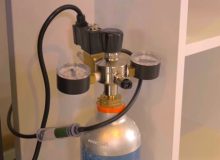
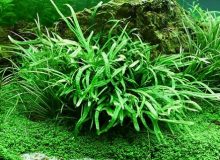
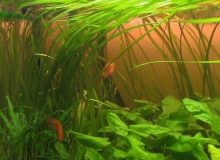
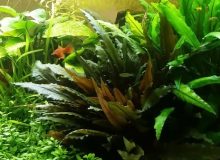

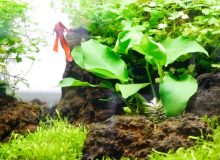
Leave a Reply